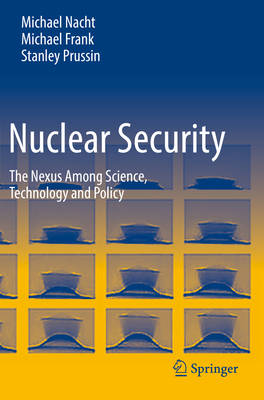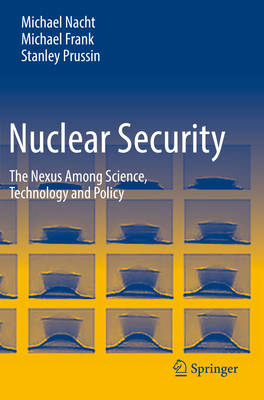
- Retrait gratuit dans votre magasin Club
- 7.000.000 titres dans notre catalogue
- Payer en toute sécurité
- Toujours un magasin près de chez vous
- Retrait gratuit dans votre magasin Club
- 7.000.000 titres dans notre catalogue
- Payer en toute sécurité
- Toujours un magasin près de chez vous
Nuclear Security
The Nexus Among Science, Technology and Policy
Michael Nacht, Michael Frank, Stanley Prussin
Livre broché | Anglais
68,95 €
+ 137 points
Format
Description
This textbook is the first comprehensive and systematic account of the science, technology and policy issues associated with nuclear energy and nuclear weapons. Throughout their account of the evolution of nuclear policy, from its origin to the early Trump presidency, the authors interweave clear technical expositions of the science and technology that underpin and constrain it. The book begins by tracing the early work in atomic physics, the discovery of fission, and the developments that led to the Manhattan Project and the delivery of atomic bombs against Japan that ended World War II. It follows the initial failed attempts at nuclear disarmament, the onset of the Cold War nuclear arms competition, and the development of light water reactors to harness nuclear energy for electric power generation. The authors thoroughly unpack the problem of nuclear proliferation, examining the strategy and incentives for states that have and have not pursued nuclear weapons, and providing an overview of the nuclear arsenals of the current nuclear weapon states. They trace the technical, political and strategic evolution of deterrence, arms control and disarmament policies from the first attempts for an Outer Space Treaty in 1957 through the new START treaty of 2009. At critical junctures in the narrative, the authors explain the relevant nuclear science and technology including nuclear fission and criticality; nuclear materials and enrichment; nuclear detonation and nuclear weapons effects; nuclear weapons stockpile constraints, stewardship and surveillance; nuclear fusion and thermonuclear weapons; technologies for monitoring, verification and proliferation; and nuclear forensics. They conclude with an assessment of contemporary issues ranging from the Joint Comprehensive Plan of Action reached to halt Iran's nuclear weapons development program, to the threat of nuclear terrorism, the perceived nuclear weapons policies of Russia and China, and the US efforts to provide disincentives for its allies to acquire their own nuclear weapons by maintaining credible security guarantees.
Spécifications
Parties prenantes
- Auteur(s) :
- Editeur:
Contenu
- Nombre de pages :
- 340
- Langue:
- Anglais
Caractéristiques
- EAN:
- 9783030750879
- Date de parution :
- 21-11-22
- Format:
- Livre broché
- Format numérique:
- Trade paperback (VS)
- Dimensions :
- 155 mm x 235 mm
- Poids :
- 650 g







